-
Flood risk for New York City, New Jersey coast rising
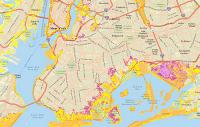
Flood risk for New York City and the New Jersey coast has increased significantly during the last 1,000 years due to hurricanes and accompanying storm surges. For the first time, researchers compared both sea-level rise rates and storm surge heights in prehistoric and modern eras and found that the combined increases of each have raised the likelihood of a devastating 500-year flood occurring as often as every twenty-five years. “A storm that occurred once in seven generations is now occurring twice in a generation,” says one of the researchers. What does that mean for residents along the New York/New Jersey coast? “An extra 100,000 people flooded in the region during Hurricane Sandy who would not have flooded if sea level had not been rising,” the researcher says of the 2012 storm.
-
-
Partnering to build climate change resiliency
South Florida ranks as the world’s most vulnerable urban region because of the large number of assets exposed to the effects of sea level rise. To build climate change resiliency, the Federal Emergency Management Agency (FEMA) partnered with Florida International University (FIU) to provide local community leaders with the knowledge and tools to assess and improve their capabilities to prevent, mitigate, respond to, and recover from climate impacts, including sea level rise, drought and wildfires, heatwaves, floods, powerful storms, and other hazards.
-
-
Transforming collegiate math experience

Throughout higher education, math courses have some of the highest failure rates nationwide. Even though math is a skill nearly every person uses on a daily basis, it has become a significant impediment to degree completion. This is what led Florida International University (FIU) to the creation of the Mastery Math program in 2010 — a high-tech, high-touch approach to improving student performance in College Algebra. FIU’s Mastery Math Program, which utilizes evidence-based teaching techniques including peer mentoring and a state-of-the-art computer lab, has since led to other projects that are reversing course on this trend.
-
-
DOJ grants fund research into homegrown terrorism
The University of Arkansas (UA) and Arkansas State University (ASU) will receive grants from the Department of Justice (DOJ) totaling over $900,000 to study domestic radicalization. UA will receive $399,531 to identify behavioral characteristics of homegrown terrorists who were able to evade arrest or neutralization for a long period of time to determine how their longevity affects potential recruits and the overall sustainability of larger terror groups. ASU will receive $508,403 to study how violent domestic extremists use the Internet to organize like-minded individuals, disseminate ideas and recruit new members.
-
-
Small-scale nuclear fusion may be a new energy source
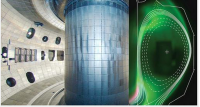
Nuclear fusion is a process whereby atomic nuclei melt together and release energy. Because of the low binding energy of the tiny atomic nuclei, energy can be released by combining two small nuclei with a heavier one. Fusion energy may soon be used in small-scale power stations. This means producing environmentally friendly heating and electricity at a low cost from fuel found in water. Both heating generators and generators for electricity could be developed within a few years, according to researchers.
-
-
Robots to pull wounded soldiers off battlefield
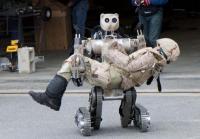
Most Americans have seen at least one war movie, where at some point a fresh-faced young private is hit with some shrapnel. From the ground, he calls out for the unit medic — another young guy, from another small town, whose quick reaction and skill just may save his life. In the near future, however, it may no longer be another soldier, who comes running to his side. Instead, it might be an Army-operated unmanned aerial or ground vehicle.
-
-
Climate change consensus extends beyond climate scientists
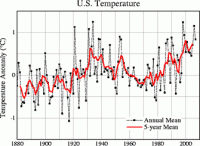
A survey of nearly 700 scientists from nonclimate disciplines shows that more than 90 percent believe that average global temperatures are higher than pre-1800s levels and that human activity has significantly contributed to the rise. The study is the first to show that consensus on human-caused climate change extends beyond climate scientists to the broader scientific community. Previous studies have shown that about 97 percent of actively publishing climate scientists believe in human-caused climate change, and a review of scientific literature on the existence of climate change indicated that about 97 percent of studies affirm climate change is happening.
-
-
Florida universities are national hub for hurricane mitigation research
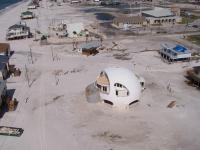
The National Science Foundation the other day announced grants to Florida International University and University of Florida totaling nearly $8 million that will position the state to become a national hub for research into making homes and businesses safer in hurricanes and tornadoes.
-
-
U.S. R&D increased in 2013, outpacing GDP
U.S. expenditures in research and development rose to $456.1 billion in 2013 — a $20.7 billion increase over the previous year, according to a new report from the National Science Foundation’s National Center for Science and Engineering Statistics. The business sector continues to be the largest performer of R&D in the United States, accounting for $322.5 billion, or 71 percent, of total national expenditures.
-
-
Helping replenish groundwater by flooding farms in the winter
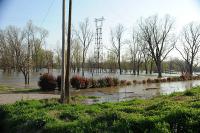
California is in chronic groundwater overdraft: There is more water being pumped from the ground than filtering in, and the state’s aquifers are shrinking as more growers pump groundwater to keep crops alive. But that fertile farmland may also provide the means for replenishing groundwater to benefit everyone in the drought-stricken state. Researchers at the University of California, Davis, are encouraged by early results from tests to see whether deliberately flooding farmland in winter can replenish aquifers without harming crops or affecting drinking water.
-
-
Testing radiation detection systems in harsh conditions
Researchers from five laboratories and a private company recently spent two days in blistering 100 degree heat testing radiation detection technologies amidst cargo containers. The fifteen researchers demonstrated the feasibility of using gamma-ray and neutron imaging detectors to identify radioactive materials using the Lawrence Livermore National Laboratory’s (LLNL) cargo container stack testbed.
-
-
Rising seas, bigger storms may greatly magnify U.S. East Coast floods
Over the past century, the East Coast has seen sea-level rise far above the 8-inch global average — up to a foot in much of the Mid-Atlantic and Northeast, including New York City. Many studies predict that future sea-level rise along the U.S. Atlantic and Gulf coasts will increase flooding. Others suggest that the human-caused warming driving this rise will also boost the intensity and frequency of big coastal storms. Up to now, though, these two hazards have been assessed mostly in isolation from each other. Now, a new study quantifies how they could interact to produce alarming spikes in the combined height and duration of flooding. It projects that coastal flooding could possibly shoot up several hundredfold by 2100, from the Northeast to Texas.
-
-
El Niño, La Niña will exacerbate coastal hazards across entire Pacific
The projected upsurge of severe El Niño and La Niña events will cause an increase in storm events leading to extreme coastal flooding and erosion in populated regions across the Pacific Ocean, according to a multi-agency study. The impact of these storms is not presently included in most studies on future coastal vulnerability, which look primarily at sea level rise. New research data, from forty-eight beaches across three continents and five countries bordering the Pacific Ocean, suggest the predicted increase will exacerbate coastal erosion irrespective of sea level rise affecting the region.
-
-
Seeing through the dark clearly

A new device, dubbed Thermal on Demand (TOD), allows firefighters to see everything in a heavily smoke-filled room, where the unassisted eye sees nothing but a pitch-black environment. TOD allows responders to see doors, furniture, light switches, debris on the floor, and victims lying on the floor. Looking through a periscopic lens, in front of a thermal camera, the wearer sees a detailed image of everything in the immediate vicinity.
-
-
Rather food versus fuel, think in terms of both food and fuel
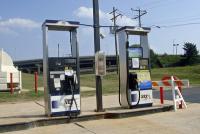
Whether you have taken a side or a backseat in the discussion, the “food versus fuel” debate affects us all. Some say growing more biofuel crops today will decrease greenhouse gas emissions, but will make it harder to produce food tomorrow, which has prevented the United States from maximizing the potential of environmentally beneficial biofuels. Scientists argue that farmers can sustainably, and affordably, meet humanity’s growing demand for food and fuel.
-
More headlines
The long view
Autonomous Vehicle Technology Vulnerable to Road Object Spoofing and Vanishing Attacks
Researchers have demonstrated the potentially hazardous vulnerabilities associated with the technology called LiDAR, or Light Detection and Ranging, many autonomous vehicles use to navigate streets, roads and highways. The researchers have shown how to use lasers to fool LiDAR into “seeing” objects that are not present and missing those that are – deficiencies that can cause unwarranted and unsafe braking or collisions.
Tantalizing Method to Study Cyberdeterrence
Tantalus is unlike most war games because it is experimental instead of experiential — the immersive game differs by overlapping scientific rigor and quantitative assessment methods with the experimental sciences, and experimental war gaming provides insightful data for real-world cyberattacks.
Prototype Self-Service Screening System Unveiled
TSA and DHS S&T unveiled a prototype checkpoint technology, the self-service screening system, at Harry Reid International Airport (LAS) in Las Vegas, NV. The aim is to provide a near self-sufficient passenger screening process while enabling passengers to directly receive on-person alarm information and allow for the passenger self-resolution of those alarms.
Falling Space Debris: How High Is the Risk I'll Get Hit?
An International Space Station battery fell back to Earth and, luckily, splashed down harmlessly in the Atlantic. Should we have worried? Space debris reenters our atmosphere every week.
Testing Cutting-Edge Counter-Drone Technology
Drones have many positive applications, bad actors can use them for nefarious purposes. Two recent field demonstrations brought government, academia, and industry together to evaluate innovative counter-unmanned aircraft systems.
Strengthening the Grid’s ‘Backbone’ with Hydropower
Argonne-led studies investigate how hydropower could help add more clean energy to the grid, how it generates value as grids add more renewable energy, and how liner technology can improve hydropower efficiency.
